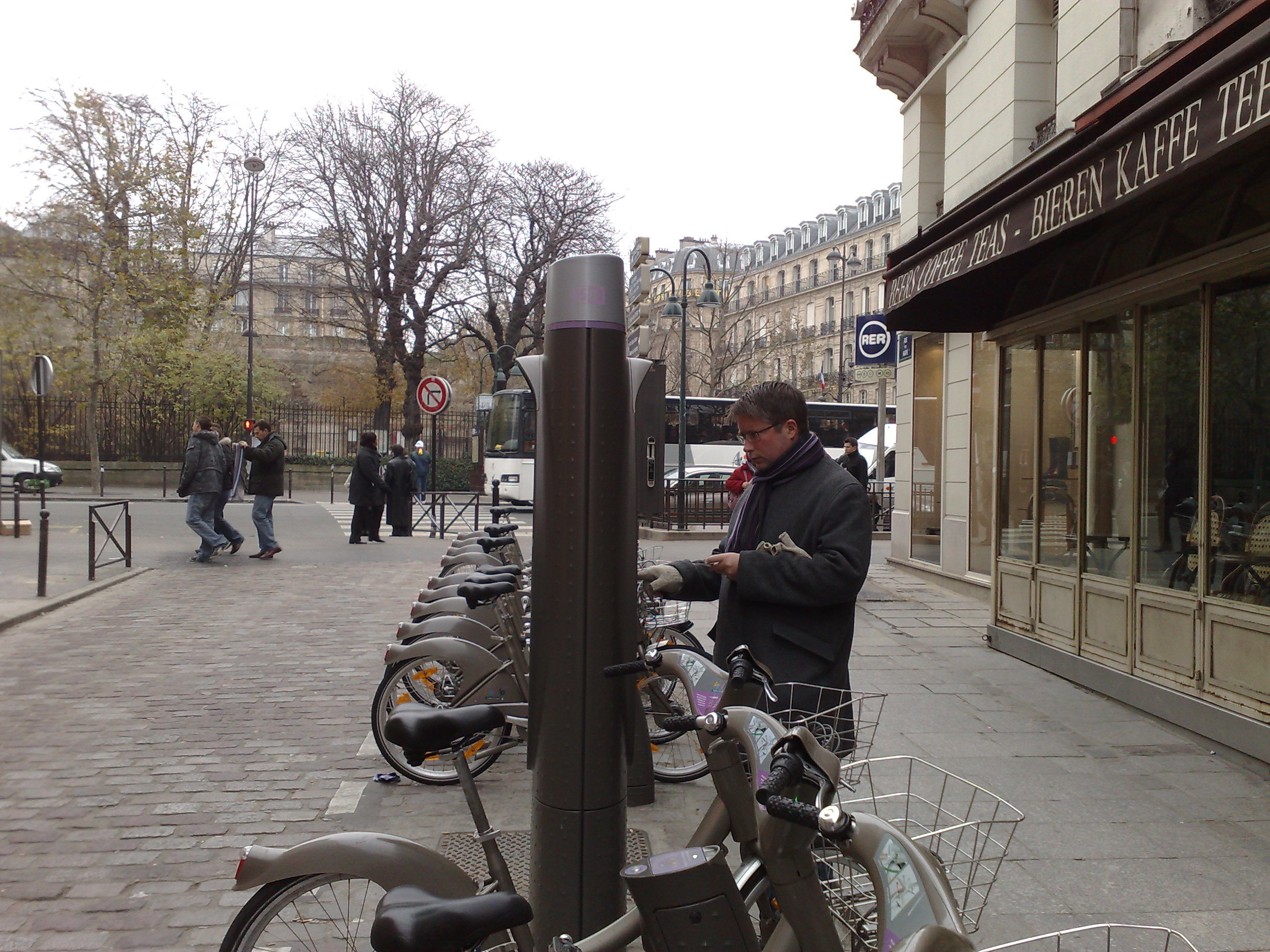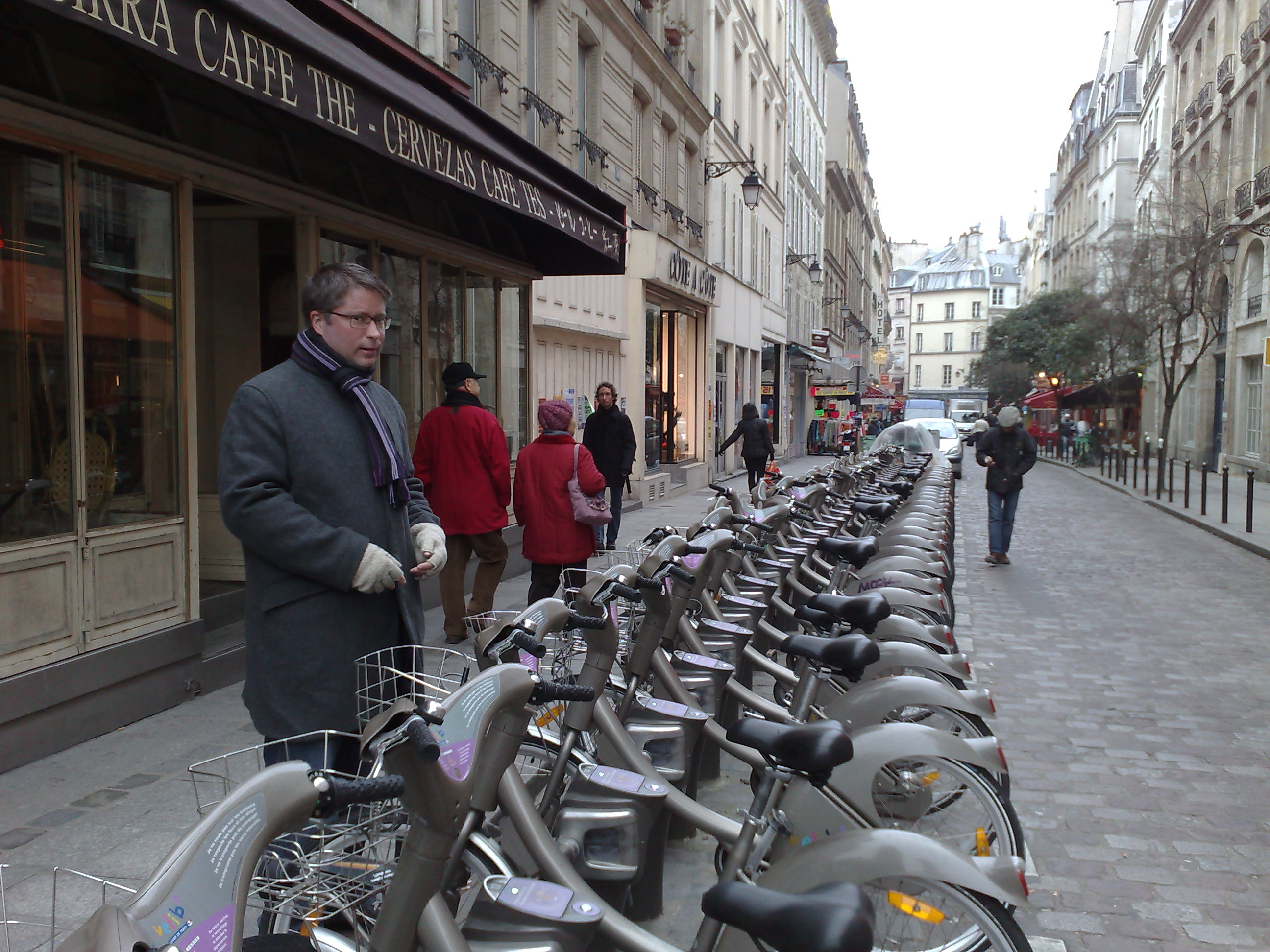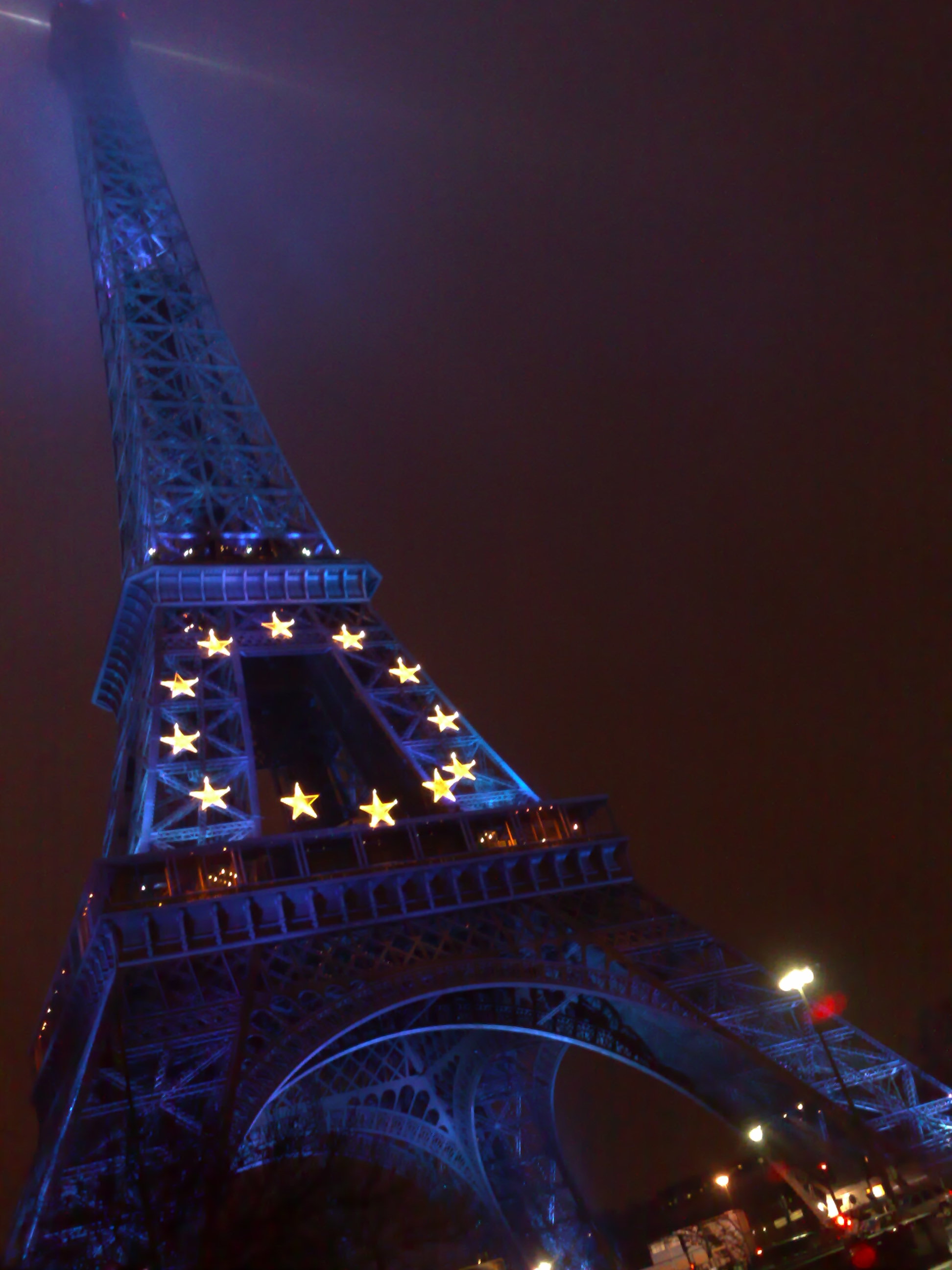Entries Tagged 'economics' ↓
December 31st, 2008 — business, design, economics, trends
Nearly every weekday between 4:00 and 7:00pm, eastbound US Route 50 in Annapolis, Maryland comes to a standstill. It typically happens near the westernmost edge of the city, and for a distance of roughly 7 miles, traffic inches along at a speeds often less than 10 miles per hour.
Yesterday it took me 30 minutes to cover these 7 miles (5:30 to 6:00pm).
It would be one thing if it was just me that was inconvenienced, or if this was a result of an accident or some unusual circumstance, but not so: this happens every day and there are tens of thousands of people affected by it. There is nothing unusual about it. We can only infer that this is how the road was designed to operate.
It would also be one thing if it was just this stretch of Route 50 that was affected by this kind of thing, but we all know it’s not. The Washington Beltway, to take one well known local example, is also apparently designed to fail spectacularly every morning and afternoon (and sometimes in between).
What does it say about a society that has its citizens sit in bumper-to-bumper traffic, day in and day out, spewing CO2 and other pollutants and wasting their time?
To me, it’s a sign of contempt. Anyone that would knowingly have people spend their time (and fuel) this way, day after day, must be filled with utter disdain for those so effected. Who’s to blame for these designs?
Surely there are some highway planners and road builders that could take the blame, but I have to think that any changes to the roads themselves can only yield marginal improvements — however needed those improvements may be.
The real issue boils down to us — the citizenry — and where we invest our financial and political capital. We are to blame.
We are the ones who have repeatedly failed to fund public transportation initiatives acquisto viagra. We are the ones who have lacked the foresight to discourage long distance car commutes. Annapolis residents famously rejected the extension of the Washington DC metro along the US 50 median because it would “bring crime” from the big city. Now Annapolis is its own capital of crime, and DC is further away than ever by car. And the median strip that once could have accommodated the metro has been sacrificed to ineffective additional lanes. Opportunity lost.
So, there you have it: we’ve locked ourselves into an economic model that provides long term competitive disadvantage. While other countries make good use of public transport and respect people’s time by moving them around efficiently, lowering pollution and making people more productive in the process, we’re stuck in the 1970’s, with people killing 2-4 hours per day in their cars spewing gases. Nice.
| Severn River Bridge Backup, US 50 |
| Miles |
7 |
| Lanes |
5 |
| Hours in Backup |
0.5 |
| Average Car Length (ft) |
20 |
| Number of Cars/Lane |
1848 |
| Number of Cars |
9240 |
| Number of Cars/Hour |
18480 |
| Number of Hours/Day |
3 |
| Number of Cars/Day |
55440 |
| Idle Fuel Consumption/Hr |
0.5 |
| Gallons Fuel/Car |
0.25 |
| Fuel Cost |
1.6 |
| Fuel Cost/Car |
0.4 |
| Total Cost/Day |
$22,176.00 |
| CO2 Generation/Gallon (lb) |
22 |
| Total Gallons Gas |
13860 |
| Total CO2 Output |
304,920.00 |
| Tons CO2 Output |
152.46 |
| Man Hours |
27720 |
| Average Hourly Rate |
$15.00 |
| Lost Value |
$207,900.00 |
So every day, by design, this SINGLE stretch of Route 50 causes at least $207,900.00 in lost productivity for people, costs $22,176.00 in fuel (at $1.60/gallon — try it at $3.99), and generates 152.46 TONS of CO2 output. And that’s when it’s working AS DESIGNED! This is what it’s SUPPOSED to do??!?
Go ahead and add in every other backup in Maryland — the DC Beltway, the Baltimore Beltway, I-95, I-83 for starters — and you’ll have an amazing amount of lost time, energy, and productivity! It’s staggering what a drag this is on our economy. And the first instinct we citizenry has is to expand the current roads and build new ones. And this won’t help!
The only things that will really help are to 1) work closer to where you live, 2) use public transportation or bikes to get there, 3) improve the design of the roads we have.
The inability (er, unwillingness) to make this happen in suburban America is why places that have better public transportation (and the vibrant work/residential communities that invariably build up around it) will outpace us in the long term.
We simply can’t compete in the world economy if we’re locked up in our cars.
December 27th, 2008 — baltimore, business, design, economics, trends
As many of you know, I live along the shores of the Severn River, a river along the Chesapeake Bay, near Annapolis, Maryland.
This infuriating (but unsurprising) article in the Washington Post suggests that the metrics of its supposed cleanup that have been taking place the last 25 years have been inflated to reflect more progress than has in fact been made.
Just as the advice to an alcoholic on how to lose weight and get back to a normal lifestyle can be nothing other than “stop drinking,” the remedy for the bay is equally stark, though more complex. And the brainless consumer squads inhabiting the Chesapeake Bay watershed want to try every imaginable remedy other than the ones that will work.
If you want to fix the Chesapeake Bay, here’s how:
- Offer massive tax credits for allowing industrial farmland to revert to forestland
- Tax fertilizer sales
- Offer tax credits for replacing industrial farms with grass farms
- Discontinue commercial Blue Crab and fish harvest in the bay; yes, screw the watermen and end the industry
- Tax all impermeable surfaces; tax large impermeable parking lots at a 4x rate
- Use the impermeable surface tax to fund a tax credit for those installing permeable surfaces
- Invest funds in stormwater and sewage handling plants
- Price water at 5x its current price
- Offer tax credits for commuting via bike and public transportation
- Tax credits for people who place land under conservation easement
Got the theme here? It’s all about taxes. While I am not in favor of taxing people, I’m also not especially in favor of large scale programs to modify human behavior. This, however, is exactly what the people say they want, and there’s no surer way to change human behavior than with incentives and disincentives. Taxes and tax credits are arguably the only direct tool that government has to create such incentives for behavior change.
If at least a good portion of these measures are not undertaken (or ones which very much resemble them), I can only assume that — like the drunk who will try every other remedy other than to stop drinking — we are not serious about saving the Bay at all.
Which makes me wish people would shut up and get about their hurried destruction of it; it is the only intent we can infer from the behavior we see. Pave the Bay never sounded so realistic. It really seems as though no one — no one with the will to make a difference — really cares to solve the problem. And I blame us citizenry first and foremost, because we won’t give our elected officials the political cover to do any of the things that it would take to actually solve the problem.
December 16th, 2008 — art, business, design, economics, social media, software, trends, visualization
Last week I had the privilege of attending Le Web ’08 in Paris, which was artfully composed and hosted by Loïc and Geraldine Le Meur. It was an interesting event; I always like getting an international perspective on technology and business.
What was perhaps most interesting was the constructive tension between creativity and business on display there.
The theme of the conference was love — a primary human emotion. However, many of the guests and speakers were aggressive, technically-minded business people. But many of the speakers were artists, musicians, and researchers.
I’m fascinated by the complementary roles of “right brained” activity (art, creativity, design, visual thinking) and “left brained” activity (analysis, rule-based systems, quantitative modeling, finance) in business, particularly on the Internet.
Loïc rightly justified the use of the theme of love for the conference by saying that it is the primary emotion that drives an Internet entrepreneur to give birth to a new idea or technology. Surely this is true, but I’d argue that there are deeper justifications for using an emotion as the theme for an Internet business conference.
Developing innovative Internet business ideas requires a sense of play and real play only comes about when people tap into their creative, artistic brains. Not to get all philosophic, but Immanuel Kant stated in his Critique of Judgement that real advances in art can only be made when art is undertaken for art’s sake alone, that is to say that it is done without any expectation of value, but rather is done merely to satisfy the curiosity of the artist (or designer, or researcher, or scientist).
So, all this means that Internet business people are in desperate need of right-brained influence. It’s where the ideas come from.
My friend Paola Antonelli, curator of architecture and design at the Museum of Modern Art, is quoted as saying, “Good design is a renaissance attitude that combines technology, cognitive science, human need, and beauty to produce something that the world didn’t know it was missing.” Love is surely a human need and is arguably a driver for all good design. And aren’t we all trying to design the things that the world didn’t know it was missing?
William McDonough, famed architect and designer, has stated, “Design indicates intent,” and shouldn’t our intent be to love one another and to love our planet? Isn’t that what we should be trying to achieve in designing our Internet startups?
I was interested to see how many people literally got up and left the plenary session when the subject matter turned to art or music or emotion. Some people were there strictly for left-brained content (how to raise money, how to survive the recession, etc) while others seemed to be more open to the right brained content.
Personally, I enjoyed the presentations by Itay Talgam (conductor), Chris Anderson (curator, TED), Helen Fisher (researcher on human relationships), and Robin Good (on education) the most. I’d say these were the most right brained. Things I enjoyed the least were the presentations by Messrs. Arrington and Gillmor, especially the unfortunate bickerfest that is the Gillmor Group that ended the conference. This is not to say that this kind of “left brained, rule-based” discussion doesn’t have a role, but it doesn’t generate anything really. All it does successfully is tear people apart; it’s not creative, and it doesn’t fuel anybody’s soul.
So, I applaud Loïc and Geraldine for a really creative and fun event, and one which truly gave me a sense of what is currently going on in the heads of European web entrepreneurs. I would simply encourage steering even further into the realm of emotion, creativity, design, and art – as it’s this kind of content which will pull us out of the recession, as it’s this kind of thinking that will help people create art and beauty for art’s sake alone, and these will be the innovations that the world didn’t know it was missing.
Rock on, Loïc, and let your right brain show; it’s your best side.
December 15th, 2008 — design, economics, politics, travel, trends
I just returned from Paris and the formidable Le Web ’08 conference that Loïc and Geraldine Le Meur hosted there, and really had a great time! I will write more about the conference shortly.
Meantime, you may have heard that Paris has installed a network of bicycle stations throughout the city and that they are available for folks to use for their commutes, errands, and to generally replace cars and other forms of transport where possible.

What the press has not reported so well is that these bikes are FREE for trips under 30 minutes (with a very reasonable 1 € /24H subscription), and that it is EASY for tourists to use the bikes. Often, European ticketing machines require credit cards which utilize a smart-card chip, but Paris’ Velib’ bikes have no such requirement.
Here’s how it works:
- Arrive at a bike station and select English as your desired language
- Select “Short term subscription” and choose a 24-hour (1 €) subscription or 7 day subscription (5 €)
- You will guarantee the bike with your credit card for up to 150 €, but you will only be charged if the bike is not returned
- You’ll be given a ticket with a subscription number good for the duration of your subscription
- Follow the directions for taking a bike, and grab one (warning, pick one with good tires and check the seat to be sure it stays up)
- Take a bike
- Return it within 30 minutes and your rental is free!
- Enter your subscription number when you return the bike to confirm the return; the bikes have active electronics that detect the station, so this may not be strictly necessary, but it’s a good idea
Now, at first the requirement to return in 30 minutes may seem like a problem, but it’s not: there are stations every 300 m throughout all of Paris, and you will see these stations everywhere. So, these bikes are great for touring! Bike for a bit, return the bike when you are near your destination or see something interesting, and then walk, train, or meander wherever you like. You can pick up your next bike wherever it’s convenient, and you never have to worry about locking up your bike, leaving a rental bike in a sketchy neighborhood, or having to go back to where you parked your bike. It’s by far the most carefree and fun travel bicycling experience I’ve ever had.
Occasionally, the station where you would like to return a bike is full. If this happens, you can enter your subscription number at the kiosk and it will give you a map of nearby stations (there should be 3-4, as they are placed every 300m). The system also issues you an extra 15 minutes of free time to get to the other station, though in practice 5 minutes is usually all that is required.

We literally did not think that we were going to use these bikes because so many of the articles we read said things like, “These bikes are not great for tourists because they require a European credit card and cost a lot of money if you keep them all day.” And yes, if you keep the same bike all day, they charge something like 4 €/hour after 2 hours. However, the cure for this is simple: don’t keep the same bike all day. Up to 2 hours the rate is something like 1 € per hour and not nearly as expensive as a traditional bike rental. And who wants to bike for more than a half hour anyway? Paris is all about stopping, checking out unique neighborhoods, grabbing some cheese and wine, and exploring. For this, Paris’ Velib’ (short for Velo Libre — free bikes) is perfect!
Other cities (and counties) should follow Paris’ lead on this. It’s a great system, run by advertising giant JC Decaux in exchange for outdoor advertising rights in Paris. No small trade, but the the benefit to the people of Paris (and to its visitors) of having a well run system for replacing cars is huge. If you have not been to Paris before, this should encourage you to go; if you visit often, please try the Velib’ bikes!

And yes, biking in Paris is somewhat entertaining. While they don’t have as developed a system of bike lane markings as in, say, Berlin, it is functional and you quickly get a feel for where it’s a bad idea to be biking. Shooting across the Seine to the Rue de Rivoli at 9:30 at night proves to be a bit harrowing, but you have the right of way and people are genuinely interested in not killing you; it would be a bureaucratic nightmare for everyone involved.
So, I can’t recommend it highly enough. Go to Paris, grab a bike, and have a great time!



